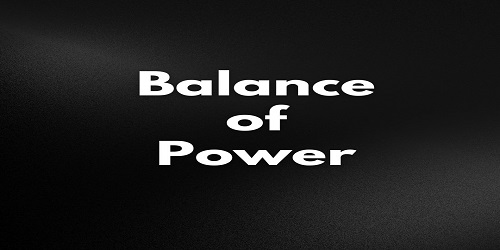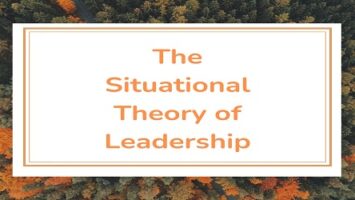Table of Contents
Balance of Power:
The concept of the balance of power has been in operation since the beginning of Greek city-states. But this is somewhat doubtful. However, there is a broad agreement that the balance of power was in operation by the 16th century. In fact, the period from the 16th to the beginning of the 19th century is regarded as the golden age of the balance of power, the period when the complicated international mechanism worked effectively. Late in the 19th century and in the 20th century, however, the mechanism is believed to have been functioning less effectively and satisfactorily than in the previous centuries.
Meaning and Nature of the Term Balance of Power:
The concept of the balance of power has never been clearly defined. Prof. A. F. Pollard opines that there are several thousand possible meanings of the phrase “the balance of power.” Thus Prof Schleicher rightly points out, “It has so many meanings that it is virtually meaningless.” As a matter of fact, every writer has defined it in his own way. Schwarzenberg speaks of it as an ‘equilibrium’. Martin Weight, A. J. P. Taylor, and Charles Lerche have regarded the balance of power as a system. Prof. Sidney B. Fay maintains that ‘the balance of power is just an equilibrium in power among the members of the family of nations as would prevent anyone of them from becoming sufficiently strong to enforce its will upon others.’ According to Prof. Moregentahu, the term balance of power is used in four different meanings:
- As a policy aimed at a certain state of affairs.
- As an actual state of affairs.
- As an approximately equal distribution of power.
- As any distribution of power.
Prof. Morgenthau asserts “Whenever the term is used without qualification, it refers to an actual state of affairs in which power is distributed among several nations with approximate equality.”
Thus multiple meaning has been given to the term balance of power. However, the main point in the concept of the balance of power is that when each nation in the world is seeking to maximize its power, and if one were to be successful in achieving great preponderance of power, it is assumed that this would endanger the liberty and freedom of all the rest. As a result of it, the other nation would group themselves together to meet power with power. In this way the power of that one nation is balanced by that of some opposing group and as such peace is maintained and the freedom of small nations is saved.
Methods of the Balance of Power:
Having discussed the nature of the balance of power, we may now discuss the methods of regaining and maintaining the balance of power. Contemporary writers have suggested at least six distinct methods: Armaments and Disarmament, Compensation, Alliances, Buffer Zones, Interventions, and Divide and Rule. Let us examine each of these methods in turn.
(1) Armaments and Disarmament- The principal method of maintaining balance is to arm. Whenever one nation increases its strength, its rival has little choice but to enter an armament race. If the first nation can preserve its strength, the balance of power will be upset, but if its rivals can also increase their power by arming themselves, the balance of power is preserved. Today’s armament race between the United States and Russia is perhaps the greatest of all armament races. Disarmament, too, could be used to restore a stable balance of power. But in practice, disarmament efforts for maintaining balance have been disappointing. Most probably the main reason for the failure of disarmament efforts lies in what Salvador de Madariaga observed: “The problem of disarmament is not the problem of disarmament. It is really the problem of the organization of the world community.”
(2) Compensation- A second important device for preserving balance is by way of territorial compensation. It means compensating a nation by giving it the equivalent of that which it is deprived of or the equal of that given to the other states. The three portions of Poland (1772, 1792, 1795) and the Treaty of Utrecht of 1713 are some of the classic examples of compensation. The division of the world into colonies and spheres of influence is often justified on these grounds. The colonies, however, lose all their power but the nations that seize them can justify their actions on the ground that if they did not seize these colonies, the opponent might, and then the balance of power would be upset.
(3) Alliances- Like compensation, alliances are also the commonly employed method of the balance of power system. Sir Robert Walpole wrote in 1741, “…..It is by Leagues well concerted, and strictly observed that the weak are defended against the strong, that bounds are set to the turbulence of ambition, that the torrent of power is restrained, and empires preserved from those inundations of war, that, in former time, laid the world in ruins. By alliance, the equipoise of power is maintained, and those alarms and apprehensions avoided, which must arise from vicissitudes of empire, and the fluctuations of the perpetual contest.” The theory is really simple. If nation A is becoming powerful enough to conquer nation B and threatens the balance, then nation B, lacking sufficient strength to defend itself, will ally itself with nation C which shares similar fear. In this way, nations B and C with their combined strength would curb the power of nation A, and thus again maintain the balance. The Franco-Russian alliance of 1894, the Anglo-American alliance with regard to Europe, and the Atlantic Charter to the Arab League of 1945 are some of the principal examples of alliances.
It is maintained that if many nations are involved in alliances, it will be easier to maintain the balance in a more satisfactory manner. For, if the number of nations involved is greater the chances of combinations by which a balance can be achieved will obviously be greater and it will be easier to make necessary adjustments for maintaining the balance. But if the number of nations is small, the defection of one nation from one side to another will cause too large a shift to be made up easily by new alliances and counter-alliances, and the equal distribution of power may be destroyed.
(4) Intervention- Intervention is another commonly used device of preserving balance. It is quite possible that the allies may shift their loyalty from one side to another. Under such circumstances, it is quite usual for a big nation to regain a lost ally by intervening in its domestic affairs and establishing a friendly government there. This method is employed frequently by those nations who are in the position of balancers. Before the end of World War II, Britain intervened in Greece to see that it did not fall into the hands of local communists. Soviet Russia intervened in the internal affairs of all its European satellites at the end of World War II to establish communist governments. After World War II, the United States intervened in Guatemala, Cuba, Lebanon, and Laos, and the Soviet Union in North Korea, Hungary, and Eastern Europe.
(5) Buffer Zones- Another important method of maintaining and preserving the balance is buffer zones. A buffer is a weak nation situated between two powerful rivals. Its major function is to keep the two powerful nations apart and thus minimize the chances of friction between them. Poland, for example, has been the buffer between Russia and Germany. Belgium and Holland have been buffers between France and Germany; and Switzerland, before World War I, was a buffer between Germany, Italy, France, and Austria. Indeed “Buffer states, “Palmer and Perkins rightly observed, “are of great importance because of their cushioning effect between great powers; they may be neutral or neutralized states, satellite states, or dependent territories, or they may be actively associated with one or two or more aggregations of power in a relatively honorable role.”
(6) Divide and Rule- A final method of the balance of power is to divide and rule. England pursued this policy with great success in many of her colonies. The British were charged with plying Hindus or Muslims in India against one another, thus facilitating British control over both. The policy of France with regard to Germany and the policy of the Soviet Union with respect to the rest of Europe- to divide and in a sense to rule- are some of the outstanding examples of this method.



![President of India [Article 52-62]- GK 4 President of India](https://gkscientist.com/wp-content/uploads/2021/05/President-of-India-Article-52-62.jpg)





Comments (No)